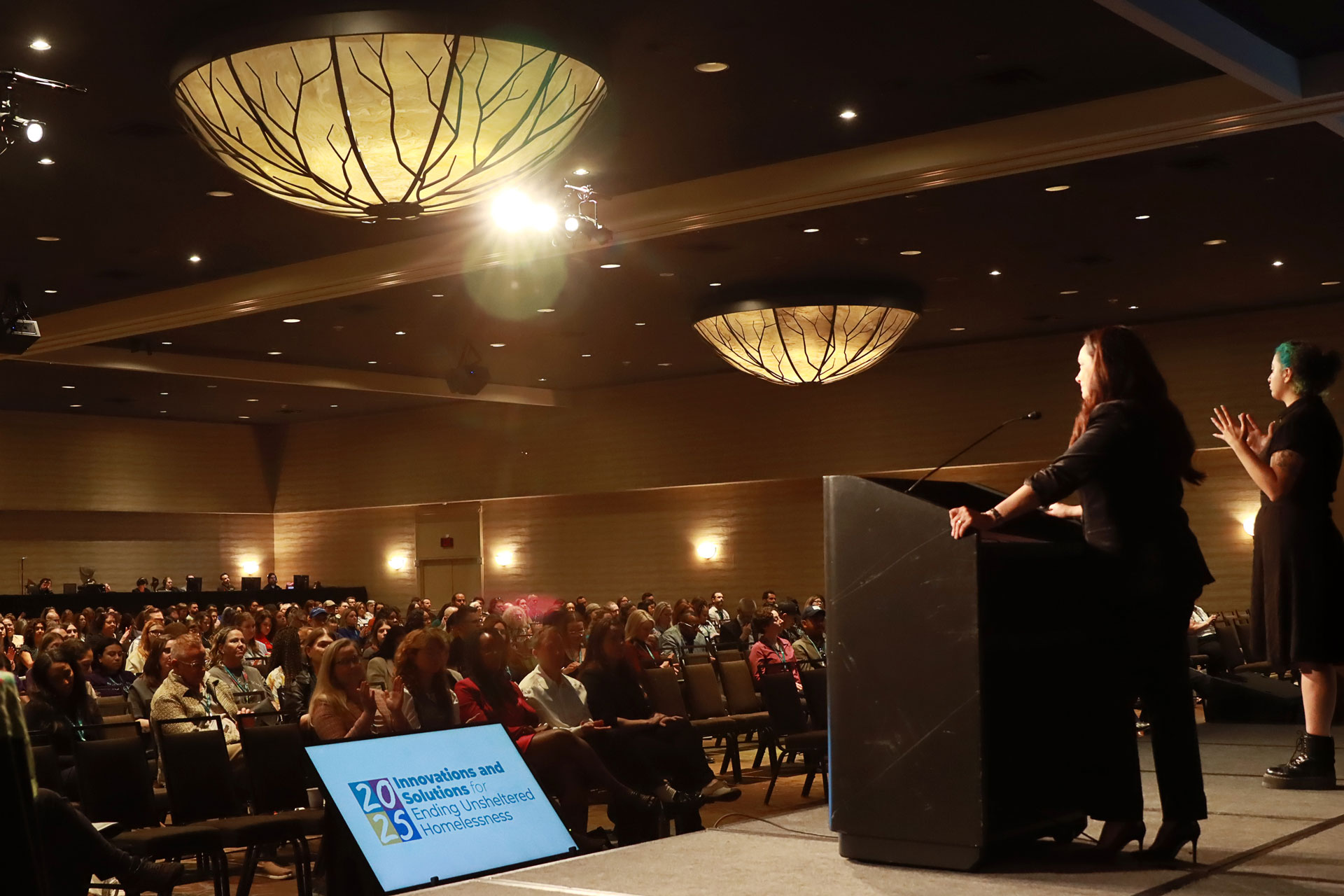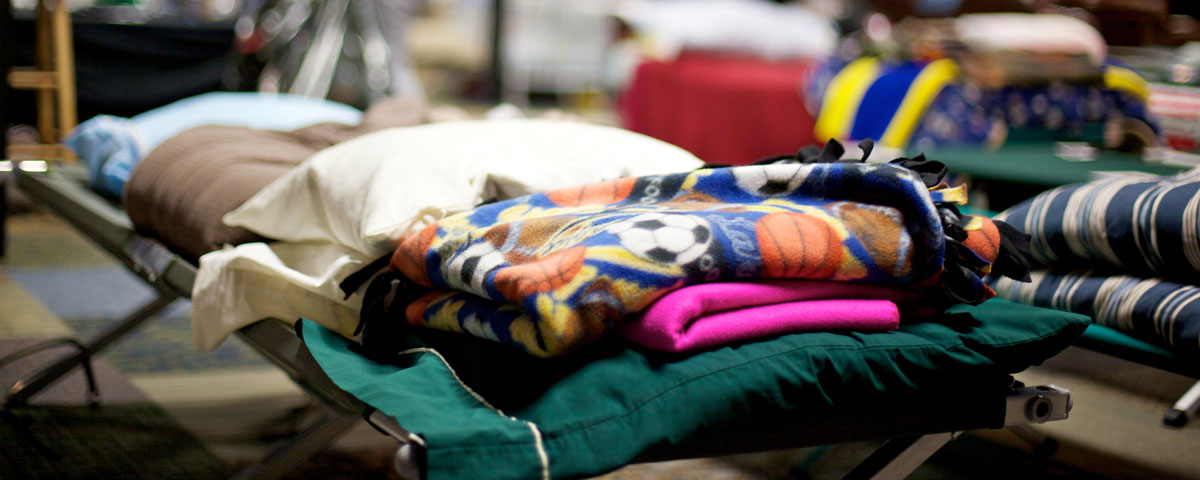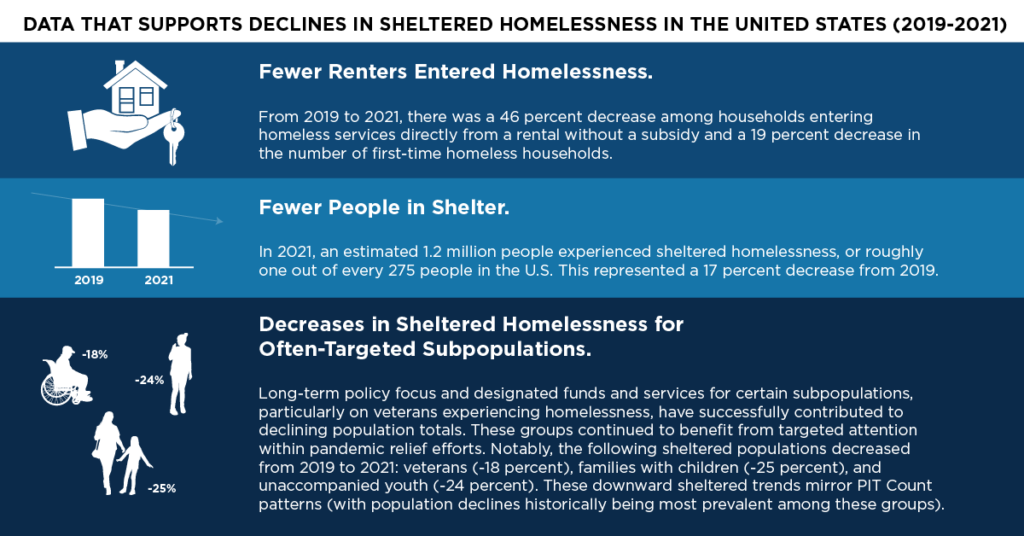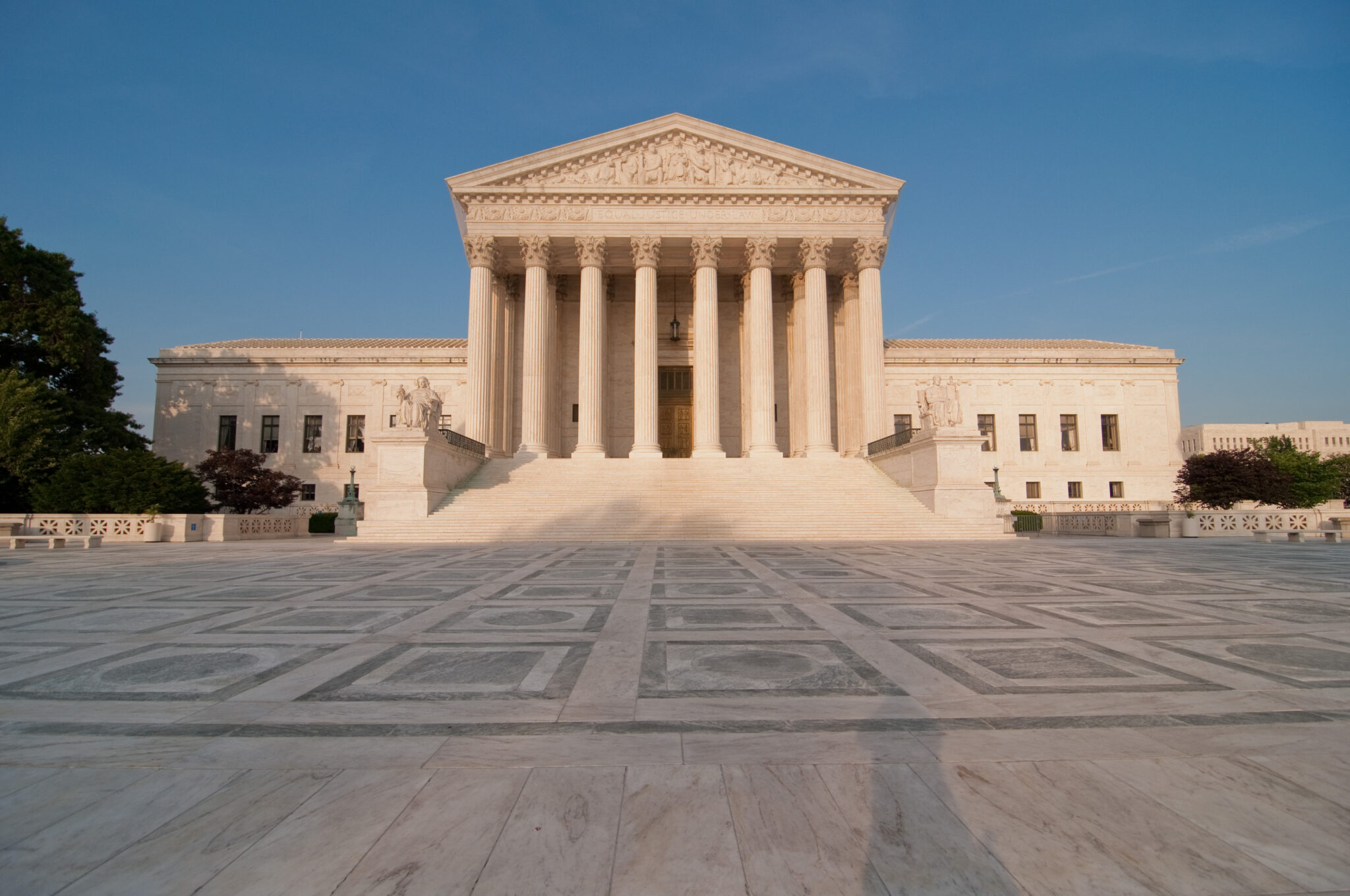Recent data from the U.S. Department of Housing and Urban Development (HUD) shows that federal COVID-19 relief measures likely contributed to declining homelessness among the sheltered population. Continued investments are still needed, however, to address growing homelessness among transgender and nonbinary people, households experiencing chronic patterns of homelessness, communities of color, and older adults.
The Annual Homelessness Assessment Report (AHAR) Part 2 analyzes who interacts with shelter systems (e.g., emergency shelter, safe havens, or transitional housing) based on data collected through the Homeless Management Information System (HMIS) from the 2019 reporting year (October 1, 2018 to September 30, 2019) to the 2021 reporting year (October 1, 2020 to September 30, 2021). Importantly, it does not include people living in unsheltered locations, vehicles, or other non-sheltered spaces.
This post will explore findings in the most recent version of AHAR Part 2, highlighting population shifts, shelter utilization among subpopulations, and the need for investments in homelessness and affordable housing.
Declines in Sheltered Homelessness
Overall, the number of people accessing shelters declined from 2019 to 2021. Federal COVID relief interventions, such as increased funding for and expansion of Housing Choice Vouchers, Emergency Rental Assistance, and eviction moratoria at the federal, state, and local levels could have also helped to keep people housed and less likely to need shelter. Supporting data includes:
Shelter population decreases are influenced by other factors, though: shelter bed capacity has been uneven (decreasing some years) and the pandemic was no exception. Social distancing protocols instigated transitions to non-congregate shelter models, and some shelters closed or restricted capacity to prevent the spread of the virus. Some people experiencing homelessness may have been hesitant to seek shelter services for health reasons. Tremendous strain on frontline staff throughout the pandemic also worsened homeless service systems’ ability to serve people experiencing homelessness. All of these factors may have led to a decrease in shelter utilization during this time period. However, for certain populations, shelter utilization increased.
Identifying Shelter Increases in Specific Subpopulations
According to the AHAR Part 2, households tended to have longer shelter stays from 2019 to 2021 than in the past. This might reflect challenges in people connecting to permanent housing during the pandemic.
Moreover, increased shelter utilization among certain sheltered populations from 2019 to 2021 may signal increased need and warrant further exploration.
- Gender expansive communities. The highest increases in shelter subpopulations were observed among household heads identifying as not singularly “male” or “female” (+103 percent) and transgender (+42 percent). These are groups have historically experienced disproportionately high rates of homelessness compared to cisgender individuals.
- Chronically homeless population. Sheltered adults experiencing chronic patterns of homelessness increased by 32 percent since 2019 and represented one quarter of the overall adult population in shelter. Most adult-only households with chronic patterns of homelessness lived unsheltered before accessing homeless services in 2021.
- Particular racial and ethnic groups. From 2019 to 2021, increases in sheltered homelessness were highest among households identifying as Asian or Asian American (+25 percent) or white Hispanic/Latino (+10 percent). However, populations such as Black and Native American households continue to be alarmingly overrepresented within sheltered homelessness. Black households made up 39 percent of the sheltered population in 2021 but only 13 percent of the general U.S. population. Likewise, Native American, American Indian, Alaskan Native, and other Indigenous households represented three percent of people experiencing sheltered homelessness but only one percent of the total U.S. population in the same year.
- Older adults. Adults over the age of 55 grew as a share of the total sheltered population, from 17 percent in 2019 to 20 percent in 2021. Sheltered households headed by adults 65 and older grew 18 percent since 2019; however, every other age group saw reductions in 2021.
Data Shows Need for Continued Investments
Given that most pandemic-era protections that helped to stabilize households throughout the pandemic have ended, there is reason for concern about increases in homelessness. Future data collection, like the 2023 PIT Count, will likely show worsening trends for both sheltered and unsheltered homelessness. Continued flexible and robust federal investment in targeted homeless assistance programs, renter protections, affordable housing, and accessible and intensive supports for low-income households will continue to prevent and end homelessness in communities across the United States.
Stay Updated: Solutions, Stories, and Ways to Make an Impact
Sign up to receive updates on the Alliance’s work, including the latest research, advocacy efforts, and real stories of progress — plus ways you can help drive lasting change.














